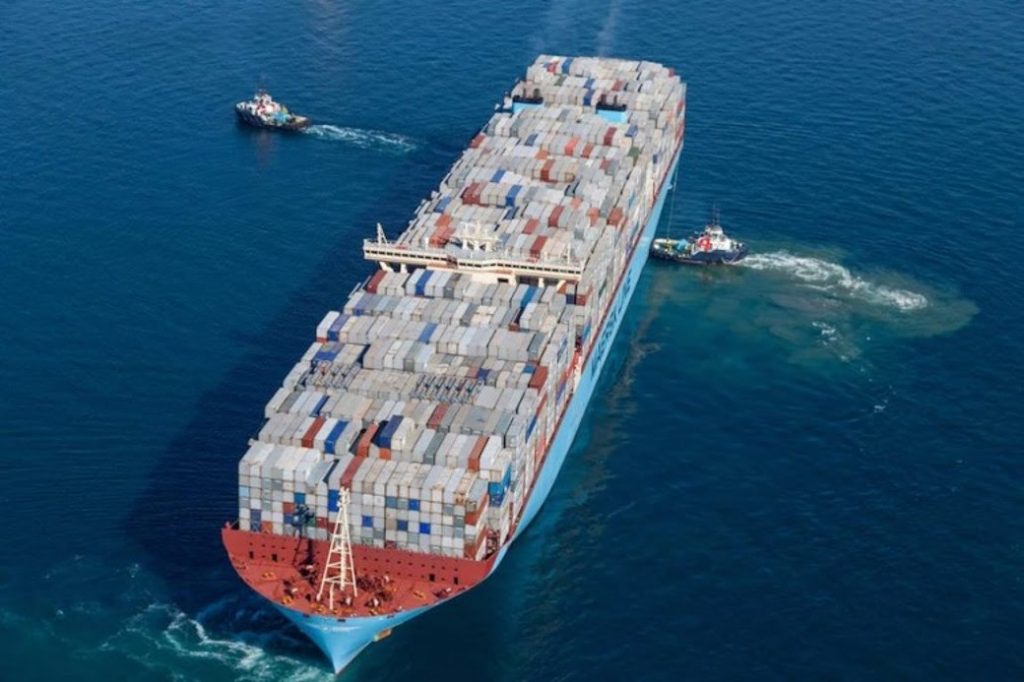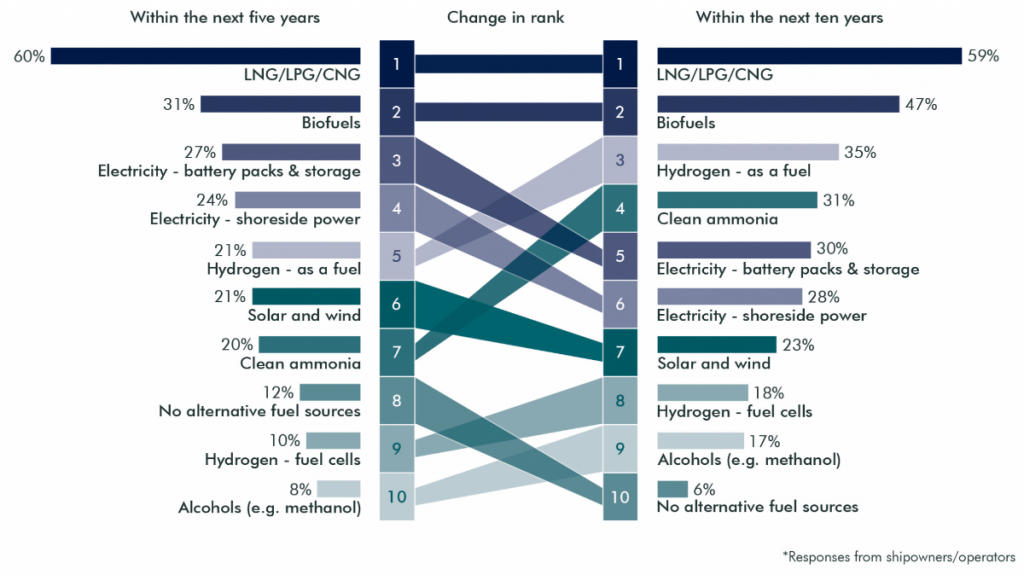Courtesy of ENERGYminute
See more articles and infographics from ENERGYminute HERE

Courtesy of Marine Insights
We buy a lot more stuff than we used to, just ask your dog’s batman costume. In 2020, some 11 billion tons of goods were transported across the ocean, compared to just 6 billion tons twenty years ago.
As shipping grows, so too do its emissions. But while some pathways to decarbonizing marine transportation are becoming clearer, they’re all still pretty murky.
For context: Global marine shipping is responsible for about 3 percent of global emissions, largely the result of carbon-intensive marine fuel and the rising popularity of the Amazon Prime lifestyle.
The trade route to decarbonization: Despite industry efforts to improve ship design and driving slower, emissions from marine transportation are projected to increase 3 to 5 times by 2050. But several alternatives to marine fuels have started to emerge to reduce that impact:
- Liquified natural gas (LNG): While not a true net-zero solution, LNG produces 20 percent fewer emissions than current marine fuels and is seen as the leading alternative to fuel oil, mainly because of its reliability and availability.
- Biofuels: Often produced from agricultural waste, biofuels can reduce emissions without major infrastructure or engine redesigns. But with the growing concerns over global food shortages, the food versus fuel debate is as strong as ever in 2022.
- Hydrogen: Assuming it can be produced cleanly, hydrogen can be combusted or used in a fuel cell as a near-net-zero fuel source. But even as an ultra-cold liquid, hydrogen’s low energy density means it needs five to fifteen times more storage space than existing fuels. This alone may eliminate hydrogen as a contender.
- Clean ammonia: Effectively hydrogen with an accent of nitrogen, ammonia avoids most hydrogen storage-density concerns. But ammonia is also toxic and corrosive, making the mass storage and transport of it a huge concern for Cheryl in the HSE department.
- Clean methanol: Liquid at room temperatures, methanol is easier to store, transport, and use compared to other alternatives but needs more innovation before it can be widely adopted.
Survey of shipowners and operators: Alternative fuel sources being considered for future use

Courtesy of Watson Farley & Williams
New fuels are cleaner but expensive
The overarching concern with lower-carbon marine fuels is that they are all more expensive than current options. For container ships that have million-gallon-or-more fuel tanks, even little increases in fuel costs can have a major impact.
Expensive, long-lasting ships: Unlike that 65” boxing-day flat screen you’ve been eyeing, container ships are expensive and almost never go on sale.
- Global shipping giant Maersk recently ordered eight methanol-powered ships for a cool $1.4 billion.
Not only that, the typical design-life of a cargo ship is some 25 to 30 years. Meaning, unless some big incentives are put in place to retrofit or replace ships before the end of their natural life, changing over the shipping fleet will be a long, arduous process. Like actual shipping…
Bottom line: While the carbon-intensity problem of marine fuels is well established, an ideal replacement fuel is not. It’s also hard to justify mass fleet conversions if the fuel you need isn’t available at every port.
In the end, the transition to cleaner marine transportation is an expensive one and will require buy-in across the globe. Like everything else you’ve ordered recently, delivering decarbonization to this industry could take longer than expected.
Share This:




 CDN NEWS |
CDN NEWS |  US NEWS
US NEWS 




























